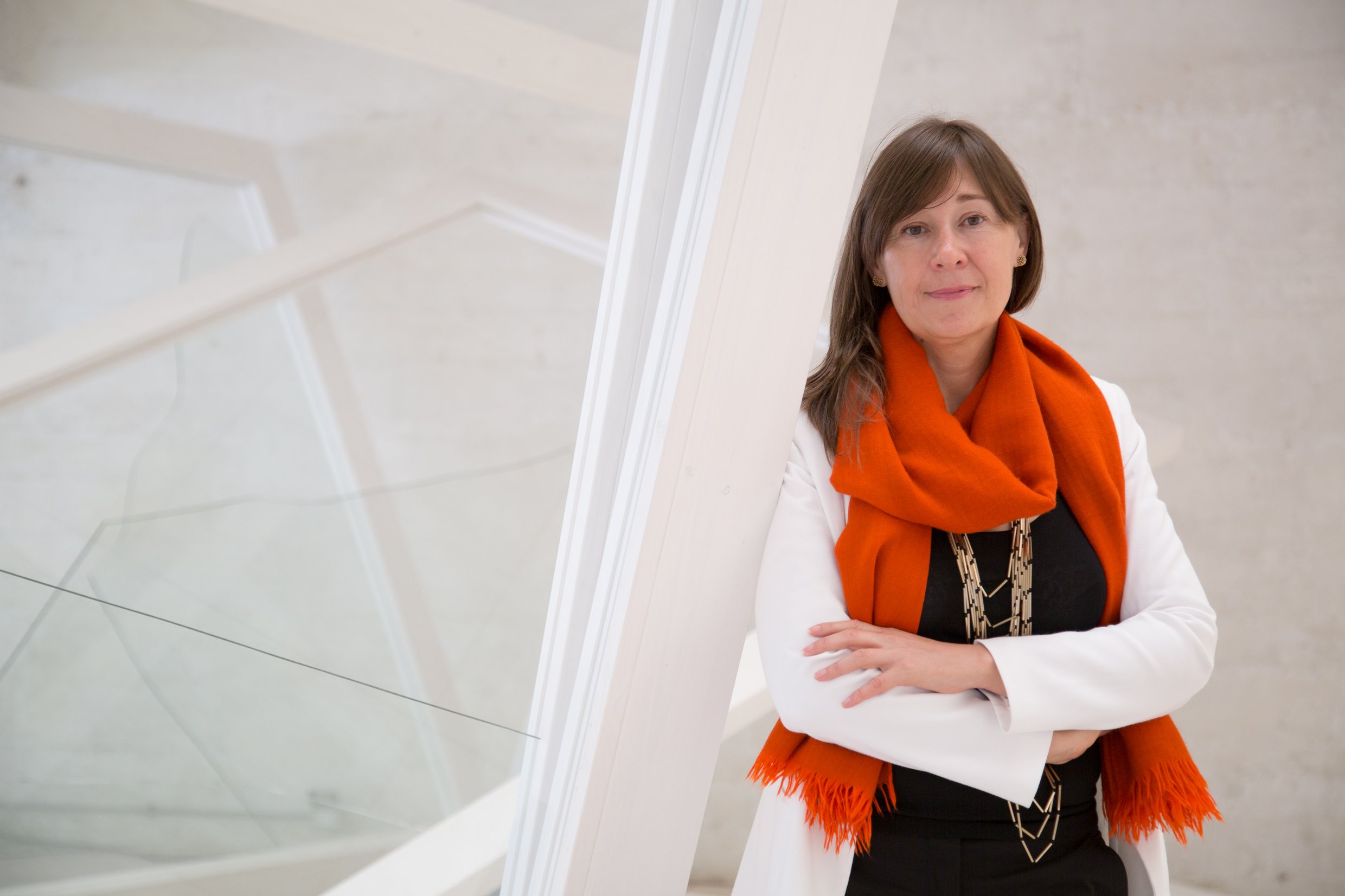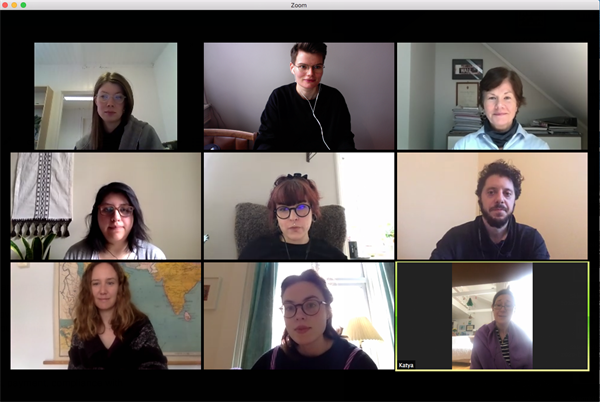A Letter from the Director of the Office for Contemporary Art Norway in response to Covid-19

A Letter from the Director
Dear colleagues and friends in Norway, in Sápmi and internationally,
First and foremost, we hope you and your dearest ones are well. We send you our love.
I write to you from home, as OCA has closed down temporarily following governmental regulations in reaction to the covid-19 epidemic. My ten-year old son is home schooling and I, as a single mum, am home officing. This is a reality so many of us in the art field share. My son’s main subject at the moment is World War II, and as I discuss with him the war's extraordinary history and its impact upon the world – on the economy, gender and racial equality, the environment, social justice and geo-politics – I cannot help consider that we are now living similarly "interesting” times, as the old Chinese saying goes.
What we are experiencing is unprecedented, and the tragic impact world-wide is unfolding before our eyes like stacked up domino chips. Who would have imagined some months ago that even some of the most socially disengaged governments would call for large-scale interventions, enabling entire nations to enter into a state of consensual lock-down. That commercial fair-pavilions and national museums would be transformed into field hospitals, and large-scale concerts shape-shift into a myriad burst of domestic performances, supported individually by citizen-fans. That thousands of retired medical professionals around the world would step forward onto the front-line of health, and that racing-car engineers would develop breathing machines for covid-19 patients. That resilient supermarket staff would become the heroes of our everyday and virologists world-wide would pool their research to fight the pandemic clock.
Whilst there may be some fears that covid-19 will unleash a new era of nationalisms, it is inspirational to see that there are an increasing number of initiatives emerging around the world to launch coronavirus relief funds that will act beyond the privileges of our fields. One of the world's most important commercial galleries Hauser & Wirth has announced they will donate 10% of profits from their online sales to the WHO Coronavirus Fund; artist Hannah Beerman set up the Instagram account "Artists for Humans”, directing all online artwork sales in support of New York City's homeless; and the UK-based curator, Hans Ulrich Obrist is calling for a vast public arts project on the scale of President Roosevelt’s Great Depression-era work-relief which employed 8 million artists to help foster art making in times of crisis.
Nevertheless, as the pandemic advances across all continents, thriving in the socio-political fractures of the world, we can expect much pain and devastation will be left behind by the time the covid-19 epidemic is finally wiped out. But with the current extraordinary socio-political-emotional morphing, how can we then go back to business as usual? The planet, and the art world, will have changed. What are we learning from covid-19?
Self-isolation makes us all deeply aware of the inner vulnerabilities and resilience in each one of us, and of the importance of our communities. We ask ourselves how far we are willing to go as a society to protect those more fragile than us. In Norway the prime minister called upon the spirit of dugnad to come forth in us all. As similar calls are made across the world, many will be asking how far consensual behaviour and precautionary/restrictive regulations will go, and to what extent are we willing to rescind our civil liberties?

There is loneliness and uncertainty, there is sickness; there are fears that home violence will escalate femicides and mental health emergencies; that vast numbers of the homeless and our elders will die; there is suspicion that there is no better situation than a crisis for minimising other emergencies, such as the climate change; and there is also a sense of defiance and optimism to endure, to be reborn after covid-19 like a phoenix out of the ashes. The extent, to which we can do this, will depend on our ability to listen to what is happening around us, and to listen to ourselves. Gullat, to hear, or guldalit, to be able to listen, is central to the world-views of our Sámi peers in the Fennoscandian region. If we are to catapult ourselves out of the current mire, and into a life in which the balance with our environment and our co-inhabitants is a primary consideration – to achieve a "good life”, as our Indigenous peers have considered pivotal to their existence for centuries – we would do well to bear guldalit in mind.
During this pandemic the digital realm (for those with the privilege to have access to it) is keeping us connected and innovative; it is raising the bar for enhanced, inclusive and collective debating. In our field, we see the extraordinary efforts made by museums, galleries and artists to continue to make culture available online. In Norway we applaud, amongst others, the Fritt Ord Foundation's fast launch of an extra 40 million kroner, to safeguard on-going art projects as well help to generate the sustainable spaces for digital public discourses of the future. Yet these digital developments also tell us that covid-19 calls for more than the virtualising of our habitual programming; it asks us all for an intensified commitment from the arts to reach out into the depths of our local and global society, fractured by covid-19, like never before. Are we about to enter an era of intensified solidarity, and how will this new digital turn deploy this moment? Will the art field acknowledge its current addiction to speed, accumulation and universal presence, and commit more deeply to a new politics and aesthetics of care? What would that look like structurally and artistically?
OCA has been researching for some years now, the micro-histories of solidarity in the arts from the 1960s to the present. Our "Art and Solidarity” project (exhibition and reader) includes case studies from India, Chile, Canada, UK, the Middle East and Norway amongst other places. Covid-19 is affecting all of these regions. We thought already a few years ago when we started this research, that empowering solidarity was increasingly an urgent issue for the art field sector; and moreover, that it was significant to mark our collective place in what we saw as an emerging global debate. The solidarity networks we will showcase, past and present, reveal themselves now to be more pertinent than ever; we can learn from the past, but also from the efforts of today, with peers abroad and at home. The project is due towards the end of this year (covid-19 dependent) in Oslo’s Kunstnernes Hus (The Artists’ House). Kunstnernes Hus has had its own history of solidarity with the world, and with them we are preparing a specially conceived film, talks and outreach programme which will carefully consider the complexity of our society. Given current developments, we are in the midst of re-thinking aspects of this entire project, as the ground literally shifts under our feet. It is an important challenge.
Just before the covid-19 explosion, climate action was at the forefront of thinking for so many of us. As I write this I receive a call from Greenpeace, reminding me that covid-19 has shown that sudden reductions in carbon emissions can lead to immediate positive changes in the environment, and that climate action needs continued support. If covid-19 incites us into being a more solidarity driven and caring society, will we care more for our environment and how will this translate into the arts field?
Much damage to the economic infrastructure of our field is being experienced as we speak. We recognise that organisations that can continue to operate, including us in OCA, are privileged, especially in the light of those artists and freelancers who are in precarious situations, and given that many institutions, large and small, are under threat. You all know the welcomed rapid measures the Norwegian government has instituted in this regard. There is so much that is needed, and OCA is thankful for the good dialogue with the artist union NBK, Norwegian Arts Abroad peers as well as with the Ministry of Culture and the Ministry Foreign Affairs, amongst others, to understand what measures are relevant in response to urgent needs and longer term needs. We are also connecting with our international sister agencies and long-established network of international peers. Covid-19 unfolds differently across the world. As a result, our considerations need to have a global multi-timeline structure, and we need to understand the impact of our measures within the wider global community.
Amongst the temporary initiatives we are undertaking, is that granted international travel funding already spent (for projects that are cancelled) do not need to be refunded to us; we are including a new temporary fund within International Support for the production of new art works to be premèried internationally, enabling artists to bounce back as soon as covid-19 permits; and there will also be support for digital profiling projects within the ISGIES fund, to strengthen the online presence of artist run spaces and commercial galleries hit hard by the postponement or cancellation of international art fairs. We are working with the ministries to further rapidly adapt our grant schemes for the rest of this year to better address the covid-19 situation and the needs of the community. Any new guidelines for the 1 May funding deadline will be published shortly after the Easter holiday.
As we can see from the current pandemic, the factors we have to consider to move forward are diverse. We see that it is the combination of micro and macro knowledges that lead to effective solutions. The symbiosis between grassroots and in-the-field actors, commercial and non-profit spaces, with larger institutional commitment, as well as smaller and larger economic packages that can be effective in delivering short term solutions. The same configurations will be needed for long-term transformations within a post-covid-19 future. OCA’s role is to activate specialist in-house knowledge of the art world internationally so that our support tools and our curatorial expertise works in tandem. Our goal is to empower the arts scene in Norway across all its facets - including the Indigenous and diasporic voices that have been contributing to redefine the nation. Our mandate is to grow the international potential of artistic communities in this country and their place as dynamic, sustainable, actors globally, across the entire ecology of the global art world.
Covid-19 will change us in Norway, and our peers across the world. There is no better time therefore to bring our minds together. I look forward to continuing the urgent dialogues with so many peers in order to fine-tune our actions as rapidly as possible, to the benefit of the visual arts sector at home, and within the frame of the international community. We want to ensure our resources are activated with greater vigour than ever, and we count on you all to support us in that endeavour.
If you would like to share any thoughts or ideas on the above, please send them to info@oca.no and we will get back to you.
With best wishes from myself, and everyone in the OCA team,
Katya